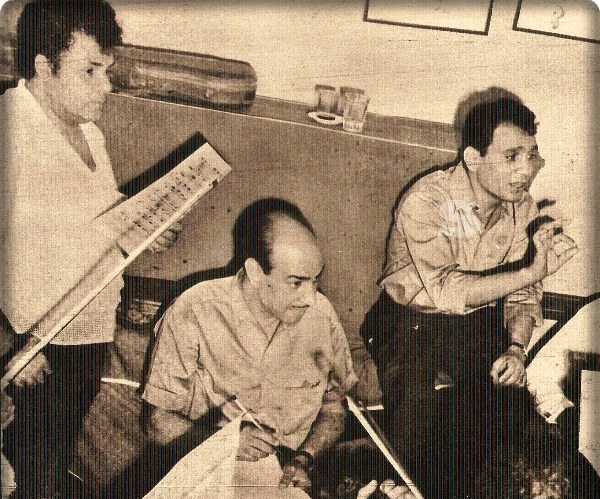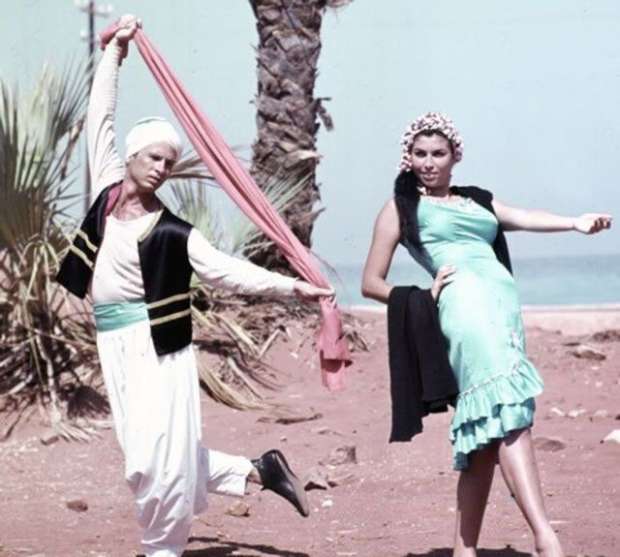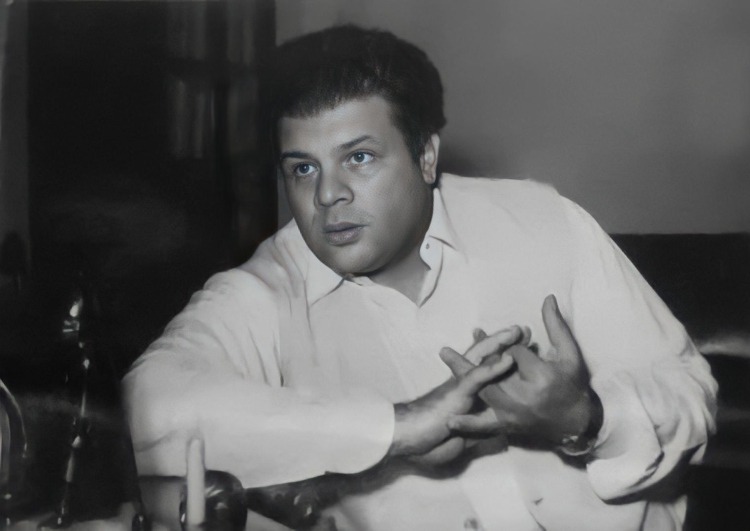In the art world, it is rare to find someone who made a significant impression on music, theater, and film; but one such person does exist, someone who dabbled and excelled in all three. His name was Ali Ismael and from a very young age, music played an intrinsic part in his day-to-day life. With it being his birthday, we wanted to honor the musical legend by taking a journey through his life and the way he transformed the musical genre in Egypt.
His Musical Journey
With his father being the experienced and renowned leader of the royal musical orchestra, Ismael was exposed to that artistic world from a very young age and discovered he had a musical ear and appreciation for the melodic tunes that would waft out during live performances and radio broadcasts.

From there, he nurtured his inborn talent by attending the Higher Institute of Arabic Music among musical legends like Abdel Halim Hafiz and that was the spark needed to propel him forward in his career. There was no song that he hasn’t composed as he was known to have been the master behind the most popular timeless tunes of that time, of songs sung by legends like Shadya and Abdel Halim Hafiz. He was also unorthodox and constantly broke the mold as at that time when everyone was racing to present songs of Abdel Halim that are full of grief, he brought in a light and uplifting touch to the legendary artist’s musical repository by composing songs like “Ya Maghramine Ya Asheqeen”.
Despite the aplomb amount of songs he shared with the world, to everyone, his most noteworthy work was when he dipped his toes into the cinematic world and wrote the music for more than 300 films. In each one, his soundtrack would add a layer of dramatic expression and rich meaning, especially in films like Youssef Chahine’s “The Land.” Beyond generic film genres, Ismael also managed to revive and re-create what is known today as the musical genre.
The Musical Genre Pre-Ismael
During Egypt’s 40s and 50s, music was an intrinsic element of cinematic features but unlike the full-out set pieces and shows of the 60s and 70s, they showcased a more rudimentary form of the performing arts genre. Magda Khairallah, a film critic described musicals from that time period as simple, consisting only of a singer on a stage and a belly dancer, and sometimes a dance troupe.
These films showcased the first instances of the special genre and included everything from the romantic 1948 film “Love and Madness” starring Mohamed Fawzi and Tahia Carioca to the 1949 Musical “Little Miss Devil” starring Samia Gamal and Farid al-Atrash.
The Era Of The Reda Band: A New Generation In Musicals
Bringing something new to the long-lived art of musicals was the beautiful matrimony that formed between Ali Ismael and the Reda Band when he became the band’s official head. This special troupe was made up of some of the best dancers in Egypt who specialized in folkloric performances choreographed by Mahmoud Reda, the founder of the troupe along with his brother Ali Reda. As usual, Ismael liked to do things differently and so he did not shy away from turning conventionality on its head when composing the music for the troupe’s two infamous films “Agazet Nos El Sana” and “Gharam Fi Al-Karnak.”

When working on any musical, the usual steps would be to first compose the music and then choreograph the dance sequences based on the compositions. Defying the norm, Ismael did the opposite by first having Mahmoud Reda choreograph the dance sequences, and then Ismael would come in and create the music so that each dance would dictate the nature of the songs.
When watching the films, audiences easily witness the intrinsic link between the two for example, during “Gharam Fi Al-Karnak”, when the troupe was building a stage at Luxor, Ismael’s melody, its rhythm and beat matched with the hammering of the nails on the wood. Building the stage with the accompanying music was a dance sequence in and of itself and so each one of those musical scenes made up the literal fabric of the film. Without them, the film would have no meaning nor substance and that is how Ismael changed the essence of what makes an outstanding musical film.
No longer were musicals about a singer on a stage, the genre became more dynamic as the Reda troupe showcased the fluidity of the genre by performing in expansive fields or along the columns of Luxor’s temples. Through Ismael, folkloric music became a popular genre of the musical realm, loved by the world and that is why to this day, many claim that nothing ever compared to that musical troupe. Now with today’s current modern age, the musical genre no longer persists in Egypt’s entertainment world with action and comedy taking the reins as the more popular genres. It is sad to see this beautiful art die out as many film critics say that it may be hard to revive it with production costs being quite hefty for the means of today’s current film industry.
That is why today, on his birthday, we had to look back at Ismael for providing the world with the true essence of the musical genre and for sharing the talent and untimely quality of the Reda troupe. Here’s hoping that the genre will make a comeback and be bigger than its age-old success.



